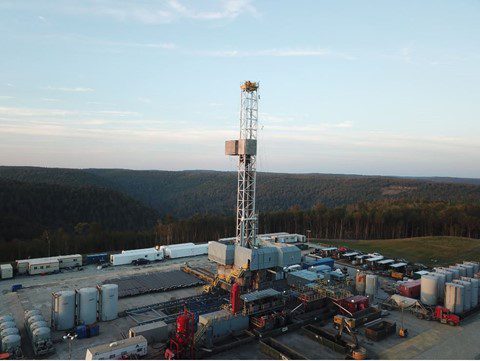While the Department of Energy claims to be “using every tool available” to increase supply of natural gas and oil, there’s not enough action happening from federal leaders to approve infrastructure, expand export capacity and increase production in this country.
The real “tool” is America’s abundance of domestic energy that’s safely produced right here in Pennsylvania, and clear, consistent policies to solidify long-term investments and create the proper infrastructure channels for sustained growth.
“The problem we face is it takes longer to permit something than it takes us to build it,” EQT CEO Toby Rice put plainly.
De facto gas production bans – whether it’s through regulatory ambiguity, permit backlogs, removing critical tax provisions or layering more fees on the industry – cripple long-term investments and limit the ability to quickly respond to market signals.
“For our industry to solve problems and provide solutions, it will unfortunately take years,” CNX CEO Nick DeIulliis said during their Q1 2022 earnings call.
Pennsylvania, Ohio and West Virginia combined produce more natural gas than any other region in the country, “but regional transportation capacity limits have been reached” the EIA pointed out last week, citing a lack of pipeline infrastructure to carry the resources from where they’re produced to where they’re demanded.
While federal regulators claim “[they’re] not here to create roadblocks for pipelines” as Federal Energy Regulatory Commission (FERC) Chairman Richard Glick said, it’s worth noting pipeline projects that could move more than 7 billion cubic feet of natural gas from the northeast have been cancelled due to costly regulatory delays and targeted activism.
And earlier this year, FERC issued a “historic overhaul” of natural gas pipeline approvals, that pits their political agenda against the commission’s primary mission of ensuring U.S. energy security, affordability, and reliability.
This includes ongoing threats to the Mountain Valley Pipeline that would deliver 2 Bcf/d to southeast U.S. consumers.
Globally, reaching consumers hinges on our ability to expand U.S. export capacity – via more liquefied natural gas (LNG) terminals and pipelines – to further reduce worldwide emissions and wean allies off of nations who use energy as a geopolitical weapon like Russia.
Rather than giving a “death sentence” to American natural gas producers, White House climate envoy John Kerry should reflect on his tenure with the Obama Administration, where power sector emissions declined 52% as natural gas’ share in the electricity sector increased to 40%, according to U.S. EPA data.
“Natural gas is central to a smart and achievable policy to cut greenhouse-gas emissions today” Kerry wrote to walk back prior statements against the domestic energy industry.
Despite pledges from the Biden Administration to support responsible development of natural resources on federal lands, Gina McCarthy, one of his own top White House advisors, recently stated “President Biden remains absolutely committed to not moving forward with additional drilling on public lands.”
Here in Pennsylvania, despite pledges of support for domestic energy production key permits still take on average over 200 days to issue, while the PA Department of Environmental Protection Southwestern Regional Office misses its own Permit Decision Guarantee goal nearly 90% of the time.
Mixed messages from leaders influences business decisions and discourages investors from directing spending capital and associated jobs to where they are needed most. Support for continued natural gas development and export is essential and will take collaboration from industry, labor, and the public to move forward. Initiatives such as Pennsylvania State Representative Martina White’s (R-PA 170) LNG task force legislation is just one important step in building out Pennsylvania as an energy and export hub, while legislation by Pennsylvania State Representative Jonathan Fritz (R-PA 111) would provide much needed certainty and predictability to the environmental permitting process by following precedent set by other state environmental regulators, such as New York.
Whether in Washington D.C. or Harrisburg, energy security comes from bipartisan efforts that promote made-in-America energy. Rather than picking winners and losers or placing blame on the industry for misguided policy decisions, leaders should instead unleash the power we have in our backyards in responsible American natural gas development.





